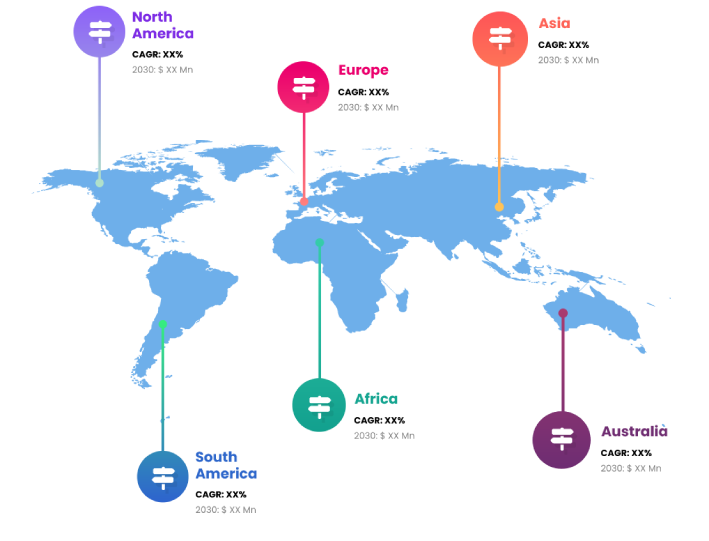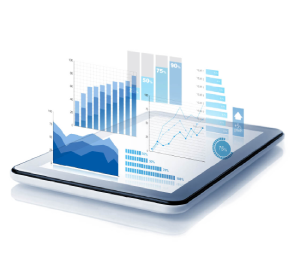
Protein analysis is bolstered by increased funding for proteomics research, which in turn drives demand for protein labeling methods. Proteomics has benefited from the rise in research and development funding, which has led to wider use of mass spectrometry, protein microarray, and biochips. Proteomics applications are in turn pushing advancements in mass spectrometry processes and the shrinking of biochips, which in turn drives the market's organic revenue growth. Almost every sector of the global economy has been negatively impacted by the COVID-19 epidemic. Precautionary lockdowns and other limitations imposed by governments around the world have significantly disrupted industry and supply-chain operations. The international market for protein labeling had also been negatively affected by COVID-19.
Proteins, as the largest and most crucial macromolecules in a living creature, play a crucial role in the organism's proper functioning. Proteins, once synthesized within a cell, interact with other biomolecules and perform functions essential to the survival of the cell. As a result, experts in fields like proteomics and protein chemistry are devoting more time and energy to understanding the mechanism by which proteins bond to one another. In order to selectively visualize, manipulate, and entrap proteins within complicated biochemical settings, most of these methods rely on the capacity to tag proteins through the creation of genetic fusions. Protein labeling can be accomplished by a variety of methods.
The worldwide Protein Labeling Market includes all the products and services used to change or attach labels to proteins for scientific, medical, and industrial purposes. Protein labeling is a technique used to investigate protein structure, function, interactions, localization, and expression by attaching chemical or biological tags such as fluorophores, biotins, enzymes, or radioisotopes to the protein. Labeling proteins is important in many fields of life science, including proteomics, drug development, personalized medicine, diagnostics, and more. Manufacturers, suppliers, and service providers in the industry of protein research and analysis all contribute to the global Protein Labeling Market.
The goal of protein labeling is to make the target protein and its binding partners more easily detectable and purifiable by the use of molecular labels that are covalently bonded to the target protein. Molecular labels, such as biotin, enzymes, fluorophores, and radioactive isotopes, are covalently attached to the protein of interest using this method.
The growth of the protein labeling market over the next several years is anticipated to be driven by rising healthcare spending and interest in proteomics research. Market growth is forecasted for the future years thanks to a number of factors, including technical developments in this sector and increasing investment on R&D. Market growth is anticipated to be spurred by developments in mass spectrometry workflows and the miniaturization of biochips over the projected period.
The protein labeling market is broken down in this study by labeling technique, end-use, product category, and geographic region. In vivo labeling, in vitro labeling, and bioorthogonal labeling are the three main subsegments of the labeling method market. Labeling in vitro can be broken down into several subcategories, including labeling with nanoparticles, labeling at a specific site, labeling with dyes, labeling during translation, and labeling with enzymes. Radioactive labeling and photoreactive labeling are two types of in vivo labeling.
Cell-based assays, fluorescence microscopy, mass spectrometry, immunological approaches, and protein microarray are the five main application-based submarkets of the protein labeling industry. The protein labeling market is broken down into the kit, reagent, and service categories. Enzymes, monoclonal antibodies, probes/tags, proteins, and other reagents are subcategories of reagents. The market is divided into submarkets based on the types of organizations that buy the products being sold. The global protein labeling market is split up by region into the four major economic hubs of the world: North America, Europe, Asia-Pacific, and the Middle East and Africa.
Report Coverage
Global Protein Labeling research report categorizes the market for global based on various segments and regions, forecasts revenue growth, and analyzes trends in each submarket. Global Protein Labeling report analyses the key growth drivers, opportunities, and challenges influencing the global market. Recent market developments and Protein Labeling competitive strategies such as expansion, product launch and development, partnership, merger, and acquisition have been included to draw the competitive landscape in the market. The report strategically identifies and profiles the key Protein Labeling market players and analyses their core competencies in each global market sub-segments.
| REPORT ATTRIBUTES | DETAILS |
|---|---|
| Study Period | 2017-2030 |
| Base Year | 2022 |
| Forecast Period | 2022-2030 |
| Historical Period | 2017-2021 |
| Unit | Value (USD Billion) |
| Key Companies Profiled | Thermo Fisher Scientific, Inc., Merck KGaA, Perkinelmer, Inc., F. Hoffman-La Roche AG, General Electric Company, Kaneka Corporation, Li-Cor, Inc., Promega Corporation, New England Biolabs, Seracare Life Sciences, Inc., Luminex Corporation, Active Motif, Inc., Takara Bio USA, Inc., Candor Bioscience GMBH, Innova Biosciences Ltd., Biotium, Inc., Qiagen N.V., Agilent Technologies, Inc., Caprion Biosciences, Nanotemper Technologies GMBH, Bio-Rad Laboratories, Bruker Inc., Kirkegaard & Perry Laboratories, Eurogentec S.A, B. Braun Melsungen AG, and Ethicon, Inc. among others. |
| Segments Covered | • By Product |
| Customization Scope | Free report customization (equivalent to up to 3 analyst working days) with purchase. Addition or alteration to country, regional & segment scope |
Key Points Covered in the Report
- Market Revenue of Protein Labeling Market from 2021 to 2030.
- Market Forecast for Protein Labeling Market from 2021 to 2030.
- Regional Market Share and Revenue from 2021 to 2030.
- Country Market share within region from 2021 to 2030.
- Key Type and Application Revenue and forecast.
- Company Market Share Analysis, Protein Labeling competitive scenario, ranking, and detailed company
profiles. - Market driver, restraints, and detailed COVID-19 impact on Protein Labeling
Market
Competitive Environment:
The research provides an accurate study of the major organisations and companies operating in the global Protein Labeling market, along with a comparative evaluation based on their product portfolios, corporate summaries, geographic reach, business plans, Protein Labeling market shares in specific segments, and SWOT analyses. A detailed analysis of the firms' recent news and developments, such as product development, inventions, joint ventures, partnerships, mergers and acquisitions, strategic alliances, and other activities, is also included in the study. This makes it possible to assess the level of market competition as a whole.
List of Major Market Participants
Thermo Fisher Scientific, Inc., Merck KGaA, Perkinelmer, Inc., F. Hoffman-La Roche AG, General Electric Company, Kaneka Corporation, Li-Cor, Inc., Promega Corporation, New England Biolabs, Seracare Life Sciences, Inc., Luminex Corporation, Active Motif, Inc., Takara Bio USA, Inc., Candor Bioscience GMBH, Innova Biosciences Ltd., Biotium, Inc., Qiagen N.V., Agilent Technologies, Inc., Caprion Biosciences, Nanotemper Technologies GMBH, Bio-Rad Laboratories, Bruker Inc., Kirkegaard & Perry Laboratories, Eurogentec S.A, B. Braun Melsungen AG, and Ethicon, Inc. among others.
Primary Target Market
- Market Players of Protein Labeling
- Investors
- End-users
- Government Authorities
- Consulting And Research Firm
- Venture capitalists
- Third-party knowledge providers
- Value-Added Resellers (VARs)
Market Segment:
This study forecasts global, regional, and country revenue from 2019 to 2030. INFINITIVE DATA EXPERT has segmented the global Protein Labeling market based on the below-mentioned segments:
Global Protein Labeling Market, By Product Type
Kits
Reagents
Services
Global Protein Labeling market, By Application
Cell-Based Assays
Fluorescence Microscopy
Mass Spectrometry
Immunological Techniques
Protein Microarray
Global Protein Labeling Market, By End User
Research Laboratories
Hospitals and Diagnostic Centers
Others
Global Protein Labeling market, Regional Analysis
- Europe: Germany, Uk, France, Italy, Spain, Russia, Rest of Europe
- The Asia Pacific: China,Japan,India,South Korea,Australia,Rest of Asia Pacific
- South America: Brazil, Argentina, Rest of South America
- Middle East & Africa: UAE, Saudi Arabia, Qatar, South Africa, Rest of Middle East & Africa
You will get in-depth and extensive protein labeling market market research and competitor analysis for your business to help you develop more profound insights into the protein labeling market Market.
Through INFINITIVE Data Expert is a professional Market Research services, I will identify the protein labeling market market size, demand & opportunities, growth rate, and target audience with a comprehensive analysis of your competitors.



